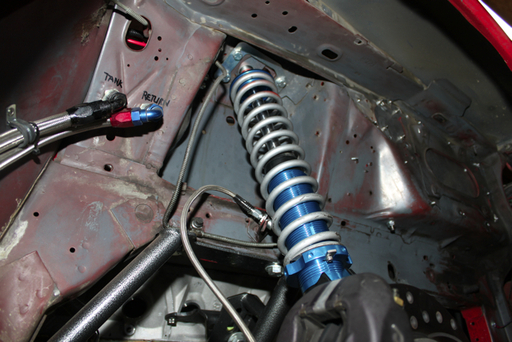
These angles can be adjusted later, but it would be better if the car were designed around the correct angles to begin with.Ĭhecking pinion angle correctly is important. If your car is finished or you are in the middle of a build-up, don’t worry. Once they do that, they set the transmission height and angle, and then build the rest of the car around that. The best chassis designers determine the ride height first by positioning the rear axle, the correct size of tires, and the wheels under the body. Maybe you’re building a full-tilt tube chassis to slide under a Fairlane shell. Place jack stands safely under the rear axle to compress the suspension as if the car were on the ground. Make sure to do this on a flat, safe surface. This is another way to lift the car up for measuring the pinion angle. I am going to cover pinion angle settings for Restomods built for street and road course racing, since the book isn’t strictly covering drag racing, Baja racing, swamp buggy racing, or grandma cars. Family trucks, production sports cars, and Restomods are not built for the same type of driving. It turns out that pinion angles are not a Jedi secret, though they differ for each application. After a lot of research, I decided to enlist the help of Kyle Tucker (an ex-GM suspension engineer). When I was doing research on this subject, I found out why it seems like there is very little information about it, and the little bit of information available seems to be contradictory. Hot rod shops and seasoned backyard mechanics commonly overlook pinion angles. Even changing leaf springs can change the pinion angle. You should check and correct pinion angles any time you change the ride height or modify the rear suspension. Over time, the angles can change and become incorrect due to loose factory tolerances, body and frame alignment, and changes in spring rates due to wear. Correct pinion angles are also very important to the life of your U-joints. Pinion angles can make the difference between a smooth ride, or a noisy and shaking ride down the freeway. Together, these angles form the driveline’s phase angle. The transmission angle is the angle between the transmission’s tail shaft and a true horizontal line. The pinion angle is simply the angle between the rear end’s pinion shaft and a true horizontal line. From those basic principals, live-axle rear suspension gets complex. All this is needed, while still allowing the axle to move up and down. It also needs to have limited travel from side to side. The axle needs to have limited fore and aft movement. When it comes to locating the live axle, the concept is basic. There are many different link configurations. A live axle is attached to the car’s frame using links, bars, or leaf springs. Any travel or motion from the left tire directly affects the right tire, since they are both attached to the axle. The live axle consists of a rigid housing that contains the axle shafts and differential, with wheels mounted solidly on both ends-this is the rear end that most of us are used to seeing under cars.

There are two typical types of rear axles: live axle and independent rear suspension (IRS). You can copy and paste this link to share:
Team z fox body rear suspension free#
SHARE THIS ARTICLE: Please feel free to share this article on Facebook, in Forums, or with any Clubs you participate in.

For a comprehensive guide on this entire subject you can visit this link: LEARN MORE ABOUT THIS BOOK HERE
Team z fox body rear suspension how to#
This Tech Tip is From the Full Book, HOW TO BUILD FORD RESTOMOD STREET MACHINES. It will also explain how to get the best all-around performance out of your rear suspension. This chapter will go over different factory and custom rear suspension systems for your Restomods. These cars are supposed to be driven, and driven hard. As with the front suspension, the rear suspension is very important when you’re building a performance Restomod.


 0 kommentar(er)
0 kommentar(er)
